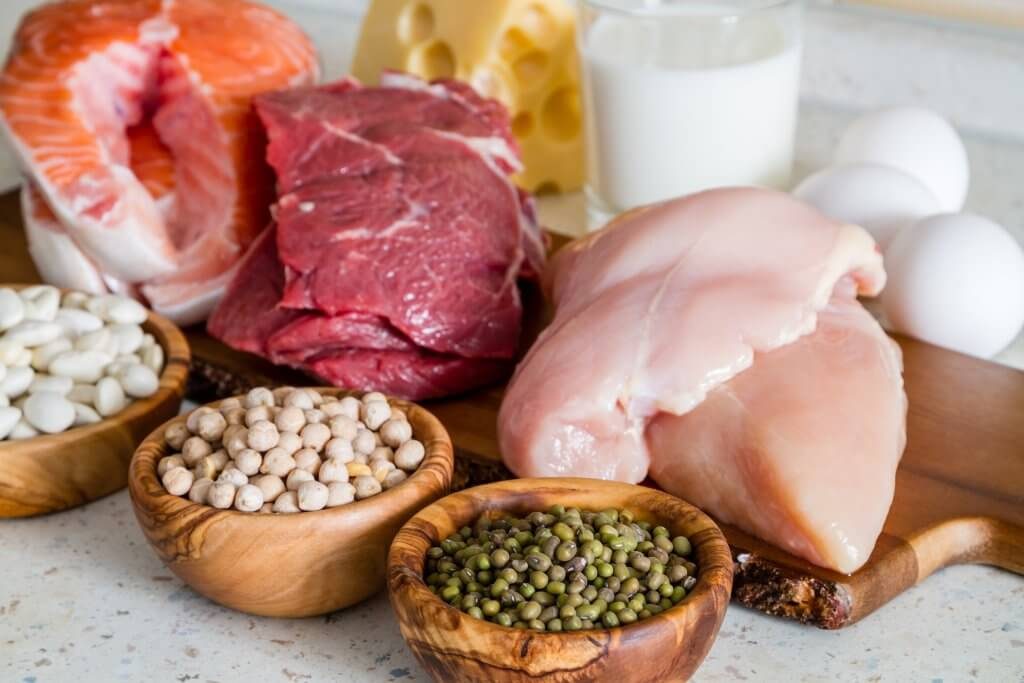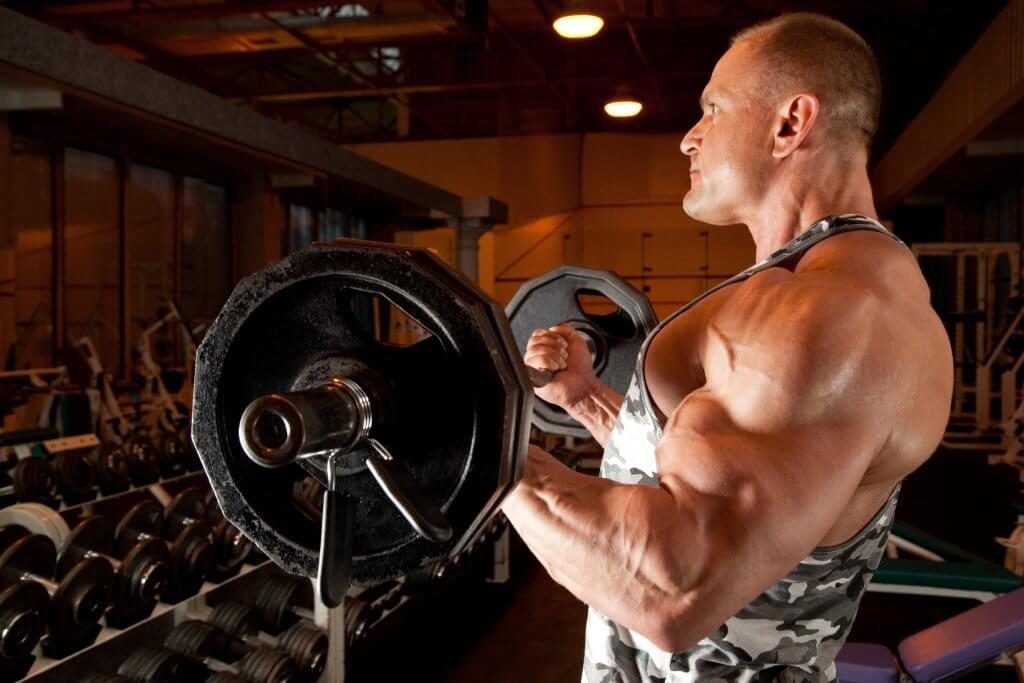Wondering how to build muscle mass? You’re definitely not alone. One advantage you have over others is your hunger for knowledge – otherwise, you wouldn’t be here right now. You want to know how to build muscle the right way – and you’ve just landed in the right place to learn everything you need to get started. Great stuff.
To build strong, sustainable muscle mass, you need to be aware there are several phases involved. They revolve around your life both inside and outside the gym.
Read on to learn everything you need to know about the most important aspects of muscle building.
Patience
If you’ve ever visited a big city or currently live in one, you don’t have to go far to see a huge skyscraper, monument, or park. These objects didn’t just appear overnight. It took time, work, and discipline for them to be crafted. Think of your body the same way.

If you ask yourself how long it takes to build muscle, the answer isn’t overnight. Just like those works of art took some time, so will this. Just how long? That all depends on your work ethic and how dedicated you are. But there are some facts about working out that you should take into consideration.
The first four to six weeks of a new routine is going to be challenging. Granted, you’re brand new to exercise. You can expect to feel sore and be sloppy with your drills at first.
This is because it’s brand new to you and your body has to acclimatize to different movements that it’s not used to. That being said, you can expect to see some growth and change in body composition during this period.
Once you get past this phase, though, you’ll be more dialed in and get into a nice rhythm. You can then start doing more advanced drills and really get your body in tune with exercise. The bottom line is you can definitely start seeing quality results within 8 weeks of training.
What about protein?
Protein seems to be the big buzzword associated with gaining muscle mass. Really, it’s no more important than the other macronutrients. However, just because you’re curious, it’s better that you get the 4-1-1 on the question of how much protein you need in order to build muscle.
First, you need to know why protein gets so much attention. That comes down to its purpose in the body. Think about this for a second. Every single cell in your system regenerates in a year’s time. Protein is essential for this to happen. It is used for regenesis.
As it pertains to muscle, when you work out, you tear small muscle fibers and that’s what causes pain every time you sit down for days on end. Well, that would be the case if you did heavy squats, at least.
Anyway, when you’ve finished working out, you need the right blend of recovery nutrients to get bigger and stronger. Protein is the main substrate that kickstarts this process. A lot of people believe that more is better, but that’s not necessarily true.

You’re only capable of digesting 30 grams of protein in any one sitting. The rest is either turned to carbs and used as energy, stored as fat, or eliminated from your system. All in all, there’s no need to break out your ‘how to build muscle protein’ calculator, because it’s not necessary.
Take a less arduous approach. Monitor your intake of protein for, say, three days. Add your totals, divide by three, and you have an average. Now add 10 grams to that and make it your new total.
Keep it there for two weeks and take before and after measurements of the muscles you’re looking to bulk up – and preferably the ones you’ve been working on. That should stand to reason.
If you notice growth, that’s great news! Keep your protein intake where it is. If you don’t, add another 10 grams to your total. Follow the same plan and keep checking every two weeks until you get to a size you feel comfortable with. Then eat that much protein a day.
This way you don’t have to listen to all these experts that have different opinions, and you also do not have to punch numbers into a calculator. They’re not completely accurate, anyway. They’re just estimates.
The truth about “lean” muscle mass
If you’re wondering how to build lean muscle, wonder no more; you’re about to find out. This is actually a pretty fun question. Muscle is lean! It sure as heck isn’t fat, so it can only be lean.
When people say they want to build lean muscle mass, what they really mean is that they want to build muscle. It always comes back to that in the end. Very rarely does someone say, “I want to bulk up and gain fat.” It’s not healthy and it doesn’t look good.

But if you want to get really technical, building lean muscle mass is the idea of building muscle in the absence of excess fat. This leads you to the crowd of people who come out of the woodwork and want to know how to burn fat and build muscle, or how to build muscle and lose fat. If you look at those two questions closely, they’re pretty much synonymous. And what all these people are saying in the end is that they want to build lean muscle mass.
Now that we’ve got that drama out of the way, here is how you build lean muscle, burn fat and build muscle, build muscle and lose fat, or do … however, you want to word it.
It’s all the same in the end, and it starts with weight training. Obviously, lifting weights is going to help you build muscle. This happens any time you fight against a resistance or load. Maybe “fight” isn’t the right word. But you get the picture – when you lift weights, your muscles get taxed and they end up growing.
Here’s where it gets even more interesting. When you do build muscle through the medium of weight training, your resting metabolism goes up. If you are completely out in left field, metabolism is the rate at which you burn calories. If you can get it revving while you are at rest, then you’re going to burn more fat. Boom!
The way you burn fat and build muscle, and by default obtain lean muscle mass, is by adding cardiovascular training into the mix. It’s pretty self-explanatory if you think about it.
Cardio training burns a high amount of calories and fat. Meanwhile, weight training builds muscle, which helps you burn fat over the course of your downtime. You are left with a favorable environment for hypertrophy (muscle gain) and fat loss.
If you want to get even faster results, you can combine cardio and weight training into the same workouts. This is often referred to as circuit training. A circuit is a series of exercises strung together where you take short rest breaks between them or no rest at all.
Obviously, the shorter the rest, the more intense the workout will be. But … you will also burn more calories. And, the higher the intensity, the more your metabolism will be lifted when you’ve finished. Drink all of this information in deeply and use it to build lean muscle mass.
Knowing your rep range

The question of how many reps you need to do in order to build muscle probably skirted through your mind, didn’t it? That’s a good question to have, and here’s a good answer for you.
Ideally, you want to do enough work to tax a muscle and spark growth. The weight you use is sort of secondary. All you really need to do is feel worked, but not so worked that you can’t move. That’s called stupid.
As a general rule of thumb, a rep range of 8 to 12 will promote hypertrophy. Having said that, you should aim for a load that you can lift in this range with good form. And you will need to do a minimum of three sets to get any benefit to start with.
Good form involves moving through a full range of motion, never swinging or swaying like a monkey, and stopping at the midpoint of every exercise for a split second to really feel the contraction. Follow these rules to a T and you will build muscle.
The incredible bulk

You should know by now how to build muscle mass. But do you want to know how to build muscle mass fast? That is another million-dollar question. If this is a concern, you must be one of those impatient types. It’s all good, though. There’s nothing wrong with that. You just might annoy some people who don’t want to hear you talk about it all the time.
Anyway, here’s the deal. In order to bulk up fast, you need to turn your fitness and dietary habits up a notch. Let’s first address your workouts. Three sets of 10 with moderate weights won’t get it done. You need to put your foot on the gas and crank out some heavy sets that cause you discomfort. To a point where you might want to give up, even. But don’t!
In this case, aim for five-plus sets and use a load that you can only lift 5 or 6 times with good form. Make sure to rest long enough between each set that you are fully recovered and can mash it to a pulp on the next set.
Lastly, incorporate as many compound exercises into your routine as possible. Compound exercises, also known as multi-joint exercises, work more than one muscle and joint at the same time. The end result is threefold.
You recruit more muscle groups, you hit more muscle fibers, and you are able to lift more weight. That has a positive effect on your muscles, leading you to build mass faster.
As for your diet, you need to eat! Eat often, eat well, and include foods that will promote muscle gain, not hinder it. Foods that will help include beef, chicken, turkey, eggs, legumes, fruits, vegetables, seeds, and nuts.

Foods that will hinder you are white bread, white flour products, cakes, cookies, blooming onions, and anything else that is high in sugar, processed, or refined. Stick to the clean and natural stuff and you will add mass to your body.
Also, keep your alcohol intake scant to zero. Not only is it high in empty calories, it also disrupts your body’s natural ability to produce testosterone. Blunt testosterone and you’re out of commission.
